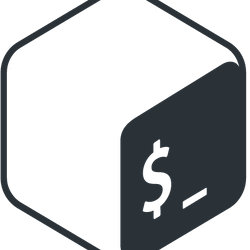
Are you looking to automate repetitive tasks, supercharge your development workflow, or just get more done in less time? Learning how to run Bash shell scripts in seconds is the secret weapon of millions of Linux, macOS, and even Windows users (thanks to WSL) worldwide. Whether you’re a coding newbie or a seasoned sysadmin, running Bash scripts quickly can save hours—sometimes even days—per month. Dive in, and let’s unlock the magic together.
What Is a Bash Shell Script?
A Bash shell script is a plain text file containing a series of commands written for the Bash shell. Think of it like a recipe: instead of ingredients and steps, a script contains commands for your computer to follow, one after another. Bash—the “Bourne Again SHell”—is the default shell on most UNIX-based systems and is lauded for its simplicity, power, and flexibility.
Prerequisites: What You Need to Start
Required Tools
- A computer running Linux, macOS, or Windows (with WSL or Git Bash).
- Terminal access.
- A text editor (nano, vim, or any IDE).
Checking Bash Installation
Open your terminal and enter:
bash --versionIf you see version info, you’re set. Otherwise, follow your system’s instructions to install Bash.
Creating Your First Bash Script
Bash Script Naming and Extensions
While Bash scripts often end with .sh (like “myscript.sh”), the extension is more for human clarity than the system’s demands. You can name your script anything, but following conventions helps.
Understanding the Shebang
The shebang (#!) appears at the top of most scripts and tells your system which interpreter to use:
#!/bin/bashThis crucial little line ensures your script runs in Bash, not another shell.
Writing a Simple “Hello World” Script
Open a text editor, paste these lines, and save as hello.sh:
#!/bin/bash
echo "Hello, World!"Congratulations! That’s your first Bash shell script.
How to Make a Bash Script Executable
File Permissions Explained
By default, new files are not executable. You must add this permission so your operating system “knows” the file is safe to run as a program.
Using chmod to Set Executable Rights
In your terminal, type:
chmod +x hello.shNow your script is executable.
Ways to Run Bash Shell Scripts Instantly
Direct Invocation
If your script is in your current directory and executable, use:
./hello.shUsing the Bash Command
Even if not executable, you can run:
bash hello.shUsing the Source Command
To execute script commands in your current shell:
source hello.shor simply:
. hello.shThis is often used for scripts that set environment variables.
Running Scripts from Any Location
Move your scripts to a directory in your $PATH, like /usr/local/bin, for instant execution from any location. Or, add your script folder to $PATH by editing ~/.bashrc.
Executing Scripts with Arguments and Inputs
Using Command Line Arguments
You can pass values to scripts like this:
./greet.sh JohnInside your script, access the first argument with $1:
#!/bin/bash
echo "Hello, $1!"Reading User Inputs in Scripts
Scripts can interactively prompt users:
#!/bin/bash
echo "Enter your name:"
read name
echo "Hello, $name!"Automating Tasks with Bash: Examples
Automating Backups
Create a simple script to back up files:
#!/bin/bash
tar -czf backup_$(date +%F).tar.gz /home/youruser/documents
echo "Backup completed."A real-world example for peace of mind!
Batch File Renaming
Here’s a script to add “.bak” to all .txt files in a folder:
#!/bin/bash
for f in *.txt; do
mv "$f" "${f}.bak"
done
echo "All .txt files backed up!"System Monitoring Scripts
Monitoring disk usage? Try:
#!/bin/bash
df -hEnhance your scripts with mail alerts or logs for more power.
Speeding Up Bash Scripts: Techniques and Tips
Use of Built-ins vs External Commands
Prefer Bash built-ins (like ${var:0:1} for string manipulation) over calls to external tools (cut, sed, awk) to reduce execution time.
Minimizing Subshells and Context Switching
Every time a script spawns a new process (a “subshell”), it slows down. Try combining commands, using efficient one-liners, or switching to pure Bash when possible for simple tasks. Even the choice of shell matters: sometimes, using sh instead of bash for simpler scripts can make things faster.
Efficient Looping and Data Processing
Use while/read loops for processing large files. Avoid unnecessary pipes and keep your code streamlined—every character counts when chasing speed.
Best Practices for Writing Bash Scripts
Readability and Commenting
Good scripts aren’t just fast—they’re readable. Use descriptive variable names, break code into logical sections, and comment generously.
# This function checks disk usage
check_disk_usage() {
df -h
}Error Handling and Exit Codes
Catch mistakes before they cause havoc by using:
set -e # Exit on error
set -o pipefail # Catch errors in pipelinesReturn specific exit codes for different errors. Your future self will thank you!
Portability and Compatibility
Stick to POSIX-compliant syntax for scripts destined for many environments. Always specify the interpreter at the top with a shebang for clarity and compatibility.
Debugging and Testing Bash Scripts
Using set -x and set -e
Enable debugging with:
set -x # Print each command before executingStop scripts on errors with set -e for safer automation.
Common Bash Scripting Mistakes
- Missing shebang lines.
- Not making scripts executable.
- Typos in variable names.
- Forgetting to quote variables in loops (leads to breaking on filenames with spaces).
Scheduling Scripts to Run Automatically
Using Cron Jobs
Automate script runs using cron. Edit the crontab:
crontab -eTo run a backup every day at 2 AM:
0 2 * * * /path/to/backup.shWhen to Use at and watch
- Use
atfor one-time runs at a scheduled time. - Use
watchto repeatedly run scripts every N seconds:
watch -n 10 ./healthcheck.shRuns healthcheck.sh every 10 seconds.
Advanced: Measuring Script Execution Time
Using $SECONDS Variable
For quick timing:
SECONDS=0
# your commands here
echo "Completed in $SECONDS seconds."Great for performance tweaks.
Using the time Command
Wrap your script run:
time ./myscript.shReports real, user, and system times, including fractions of a second.
Troubleshooting: Script Not Running Instantly?
Permission Issues
Scripts won’t run if they lack execute permissions. Use chmod +x and always check.
Path and Environment Variables
If command not found pops up, the script’s path isn’t set or isn’t in $PATH. Confirm your locations and adjust as needed.
Common Shell Pitfalls
Beware of:
- Line endings from Windows (use
dos2unixto convert) - Typos in command syntax
- Sourcing scripts unintentionally
FAQs
1. Can I run Bash scripts on Windows?
Yes! Use Windows Subsystem for Linux (WSL) or tools like Git Bash to run Bash scripts natively.
2. Why isn’t my Bash script running instantly?
Check that your script has execute permissions (chmod +x script.sh) and a proper shebang. Also, verify its location and line endings.
3. How do I pass arguments to my script?
Simply add them after the script name (./script.sh arg1 arg2). Inside the script, use $1, $2, etc., to access them.
4. What is the fastest method to run a script repeatedly?
For quick repetition, use the watch command: watch -n 5 ./script.sh to execute every 5 seconds.
5. Is there a risk in running scripts I find online?
Absolutely! Only run scripts from trusted sources and always review the code for malicious commands before executing.
